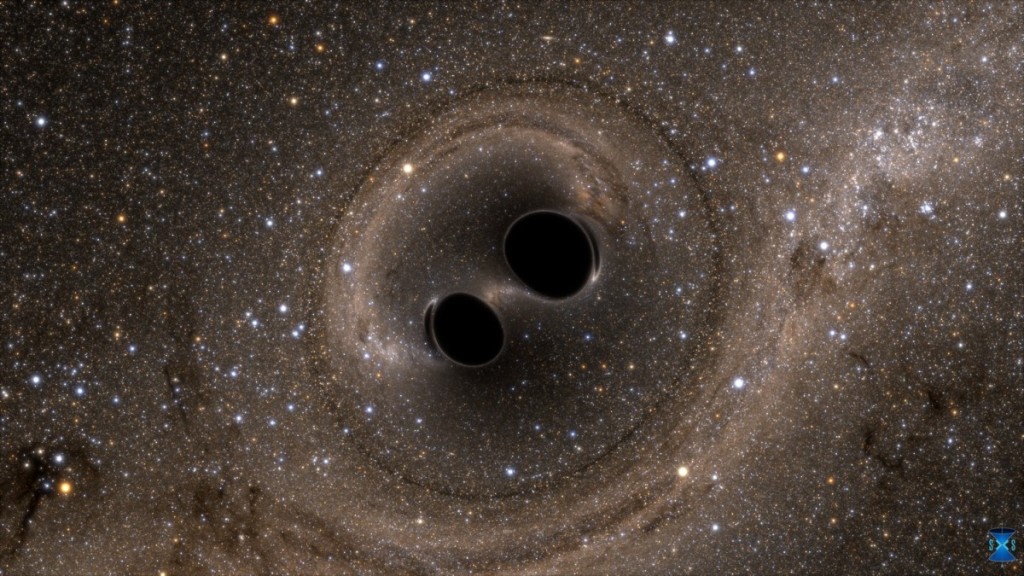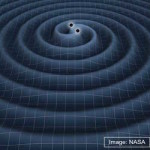The Discovery of Gravitational Waves

Image credit: SXS, the Simulating eXtreme Spacetimes (SXS) project (http://www.black-holes.org).
On February 11, 2016, a public press release together with a Physical Review Letters article announced [1] the first direct detection of gravitational waves radiated by the merger of a pair of black holes 1.3 billion light years away, by the Laser Interferometer Gravitational-wave Observatory (LIGO) multi-university collaboration.
Why is this a big deal? This discovery marks a revolutionary scientific breakthrough for multiple reasons:
- One hundred years ago, Albert Einstein observed that the equations of General Relativity [2] that describe the curvature of space and time admit a seemingly simple solution, which looks like a wave. He first thought that this may be a mathematical artefact, to conclude later that the result is actually correct, although probably impossible to measure. He argues that when such a gravitational wave passes the distance between two test masses changes because of the disturbance of space and time carried by the wave. He estimated that this change in distance should typically be one part in 1021. One hundred years later and at a cost of almost half a billion dollars this formidable technical feat has been finally accomplished!
- The detection of such faint signal confirms the existence of black holes. Black holes are object so massive that not even the light can escape their gravitational pull. Therefore one cannot see a black hole. More precisely, nobody have been able to see a black hole until Feb 11, 2016, since the only radiation that can be emitted is the gravitational one. This discovery opens a completely new page in astrophysics and the exploration of fundamental science, similar with the invention of the telescope by Galileo Galilei.
- Not only the existence of black holes has been undeniably confirmed, but the data from LIGO actually shows in great detail two black holes spiraling around each other at faster and faster speed until they merged. This is just one out of several ways in which gravitational waves are generated. LIGO is also searching for signals from spinning-out-of-control supernovae and vestigial energy waves that witnessed the beginning of the Universe.

Image credit: NASA
The Department of Physics at Texas Southern University has been actively developing expertise and research in this area. Dr. Perotti and Dr. Vrinceanu had participated in LIGO with advanced digital signal processing methods. Dr. Vrinceanu is currently teaching a General Relativity class. The Department is also building a radio telescope, which will be soon mounted on the roof of Technology Building, under the supervision of Dr. Migenes.
[1] “Observation of Gravitational Waves from a Binary Black Hole Merger” by B. P. Abbott et al. (LIGO Scientific Collaboration and Virgo Collaboration), Physical Review Letters 116, 061102 (2016).
[2] “Die Grundlage der allgemeinen Relativitästheorie” by Albert Einstein, Annalen der Physik 49, 769–822 (1916).